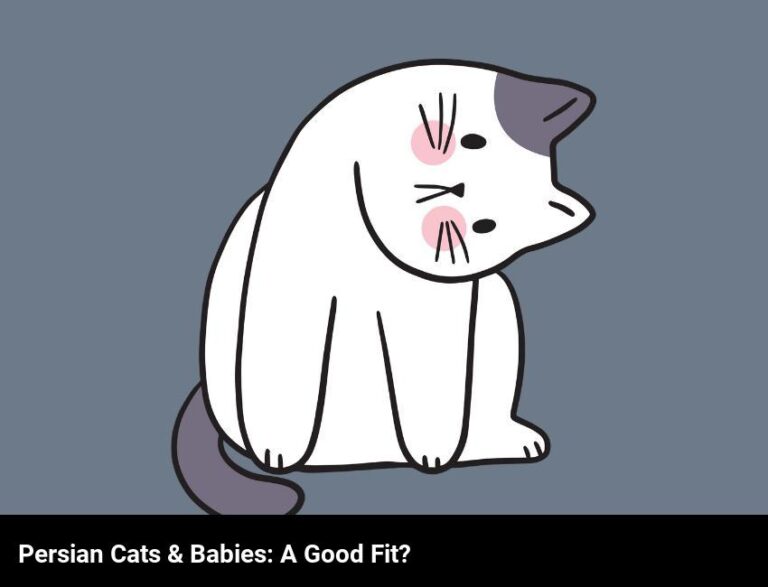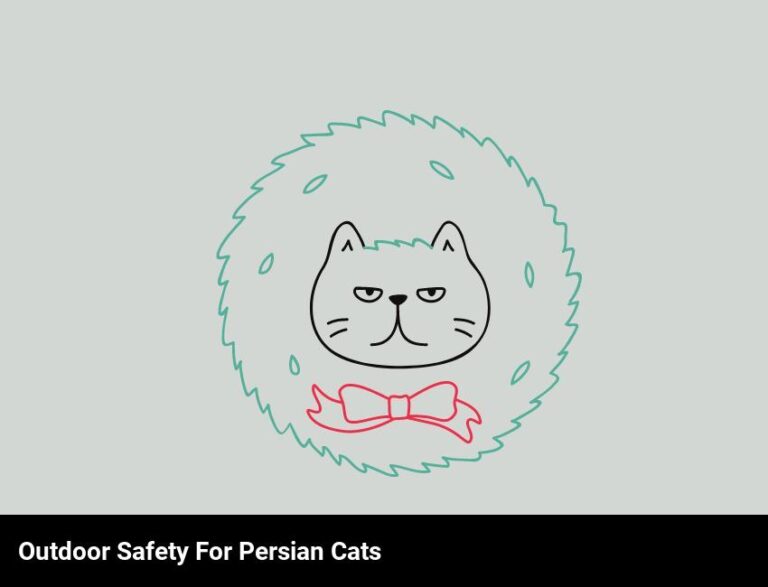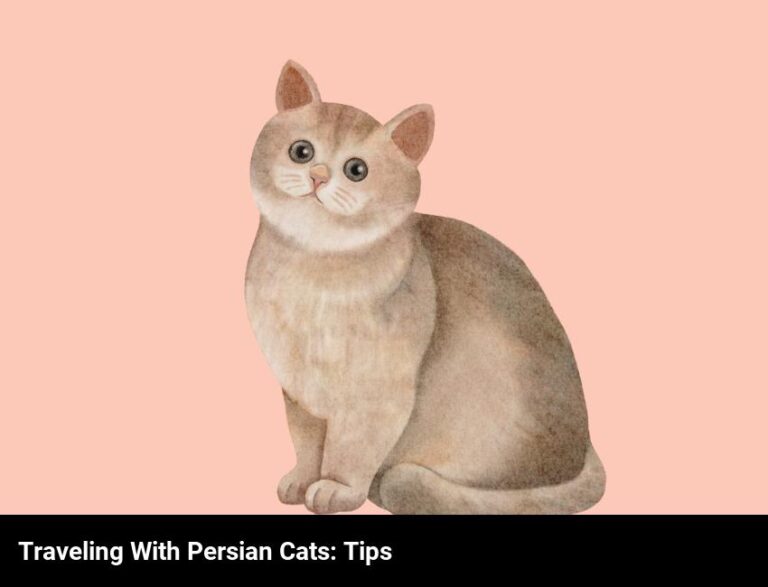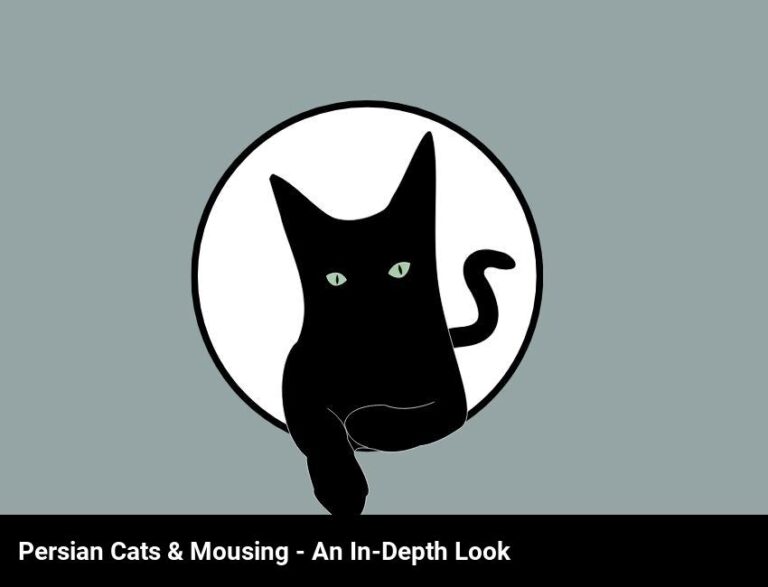How Much Does A Persian Cat Cost?
The cost of a Persian cat can vary widely, depending on factors such as the cat’s age, quality, and where you purchase it. On average, a Persian cat can cost anywhere from $800 to $2,000.
I’ve always been a big fan of cats, so when I decided to get a pet, I knew I wanted a Persian Cat. I quickly realized that there was a lot I still needed to learn about the breed, and one of the most important questions I had was: how much does a Persian Cat cost?
After researching and talking to experts, I quickly learned that there are a lot of factors that affect the cost of a Persian Cat. It’s important to consider the type of breed, the age of the cat, and any health considerations that come along with the cat. Additionally, there are additional costs associated with the purchase of a Persian Cat, such as food, supplies, and vet visits.
It’s also important to consider the different price ranges for a Persian Cat. Depending on the factors I mentioned, the cost of a Persian Cat can range from a few hundred dollars to thousands. Furthermore, there are other factors to consider when looking at the cost of a Persian Cat, such as the location and availability of the cat.
In this blog, I’ll discuss the different factors that affect the cost of a Persian Cat. I’ll also talk about the different price ranges for a Persian Cat and the different ways to find a cat that fits into your budget.
What are the factors that affect the cost of a persian cat?
When it comes to the cost of a Persian cat, there are several factors that come into play. You’ll need to consider the age, sex, rarity, and even health of the cat.
Age is an important factor to take into consideration when looking at the cost of a Persian cat. Generally, kittens are more expensive than adult cats. Younger cats don’t have the same amount of experience, and they require more attention and training to become a well-behaved pet.
The sex of the cat also affects the cost. Female cats are typically more expensive than male cats because they are in greater demand.
Rarity is also a factor when it comes to the cost of a Persian cat. If the cat has a unique coat pattern or color, then it will be more expensive.
Finally, the health of the cat is a major factor. If the cat has any health issues or has been subject to any medical procedures, then this could affect the price of the cat.
Overall, the cost of a Persian cat will depend on the age, sex, rarity, and health of the cat. By taking all of these factors into consideration, you can find a cat that best fits your budget and lifestyle.
How much does the breed type of a persian cat affect its cost?
When it comes to Persian cats, the breed type does make a difference in price. The exact cost can vary greatly depending on factors such as age, health, and availability.
The most common type of Persian cat is the traditional flat-faced variety. These cats are typically quite expensive, with prices ranging from $1,500 to $3,500. These cats are typically more expensive due to their unique appearance and rarity.
The next most expensive type of Persian cat is the Peke-faced variety. These cats are a little less expensive, with prices ranging from $750 to $2,000. These cats have a more extreme flat-faced look and are also quite rare.
The least expensive type of Persian cat is the Doll-face variety. These cats are much more common and have a more “normal” face. Prices for these cats typically range from $200 to $1,000.
In addition to the breed type, there are other factors that can affect the price of a Persian cat. If the cat is younger, it may be more expensive than an older cat with the same breed type. Healthy cats are also typically more expensive than cats with health issues. Lastly, availability can play a role in how much a Persian cat will cost. If the cat is rare or hard to find, the price may be higher than a more common cat.
So, if you are looking for a Persian cat, it is important to consider the breed type. Depending on the type of cat you are looking for, you could be paying anywhere from $200 to $3,500. As always, it is important to do your research and find the best option for you and your budget.
How much does the age of a persian cat affect its cost?
When buying a Persian cat, the age of the cat is a major factor in determining the cost. Generally speaking, a Persian kitten that is six weeks old or younger will cost significantly more than an adult cat. Kittens are in high demand due to their small size and cute appearance, and they can cost anywhere from $400 to $1,000.
Adult cats, on the other hand, cost significantly less. Depending on the quality of the cat, and its age, an adult Persian can cost anywhere from $200 to $600. Senior cats are usually the least expensive, and they can cost as little as $100.
Whichever age cat you ultimately choose, it’s important to make sure you purchase from a reputable breeder. If you’re buying a kitten, make sure you ask to see their parents and look for any signs of health problems or genetic issues. An adult cat should also be checked out by a vet before you make your purchase.
Overall, the age of a Persian cat will significantly affect its cost. Kittens are usually the most expensive, while adult cats and senior cats are significantly cheaper. However, you should always make sure that the cat you’re purchasing is healthy and well-cared for, regardless of its age.
What kind of health considerations should be taken into account when looking at the cost of a persian cat?
When looking at the cost of a Persian Cat, it is important to consider the animal’s health. Persian Cats have long, thick coats that require regular grooming, which can be expensive. Additionally, due to their unique facial structure, Persian Cats are more prone to eye and respiratory problems than other breeds and will require a veterinarian visit more often. Furthermore, their flat faces can lead to dental problems and require special food.
In terms of preventative care, it is important to get a Persian Cat vaccinated and regularly checked by a vet. This will help to ensure that any health concerns, such as parasites, can be identified and treated early. Additionally, regular checkups can help identify any potential health issues that may arise in the future.
Finally, it is important to consider the cost of pet insurance when looking at the cost of a Persian Cat. Pet insurance will help to cover the cost of veterinary treatments should the animal become ill or require emergency care. Many pet insurance policies also include coverage for routine care such as vaccinations, deworming and dental cleaning.
Overall, it is important to take into account the animal’s health when considering the cost of a Persian Cat. A proper diet, regular grooming, and preventative care can be expensive, but they are necessary to ensure the long-term health of the animal. Additionally, pet insurance can help to cover the cost of unexpected veterinary bills.
Are there any additional costs that come with purchasing a persian cat?
Yes, there are a few additional costs that come with purchasing a Persian cat. These costs include food, litter, vet visits, toys, and grooming.
Food is essential for any pet, and a Persian cat is no exception. Food can range anywhere from high-end brands to generic brands. The cost of food will depend on the quality and the amount that you feed your cat.
Litter is also important, and you will need to factor in the cost of buying litter each month. If you opt for a more expensive litter, the cost will be greater.
Regular vet visits are important to maintain your cat’s health. Depending on where you live, these visits can range from $50-$200 per visit.
Toys are also a must for your Persian cat. Whether it’s scratching posts, cat-nip toys, or even laser pointers, you’ll need to factor in the cost of buying toys for your pet.
Finally, grooming is an important part of owning a Persian cat. Depending on the type of grooming you choose, you may need to spend anywhere from $50-$100 per visit.
In conclusion, there are additional costs that come with purchasing a Persian cat. Although these costs may be slightly expensive, they’re essential for keeping your cat healthy and happy.
What are the different price ranges for a persian cat?
When it comes to buying a Persian Cat, you’ll find a wide range of prices. On the lower end of the price spectrum, these cats can cost anywhere between $400 and $600. Of course, this is an average and the price may vary depending on the availability and quality of the breed.
On the higher end, you may find these cats going for anywhere between $800 and $1,000. This price range applies to cats that come from a reputable breeder and have good lineage. It also includes cats with good health and temperament, so if you’re looking for a show quality Persian Cat, you can expect to pay in the higher range.
And lastly, you’ll find some Persian Cats that cost even more than $1,000. These cats are usually rare or exotic breeds that come with a certificate of authenticity. So if you’re looking for a rare Persian Cat, you should be prepared to pay more.
To sum it up, the price of a Persian Cat can vary quite a bit depending on the breed, quality, and availability. But generally speaking, you should expect to pay anywhere between $400 and $1,000 for one of these cats.
What other factors should be taken into account when considering the cost of a persian cat?
When considering the cost of a Persian cat, there are several other factors that should be taken into account. The first is the cat’s health. A healthy cat will cost more up front, but the long-term benefits will be worth it. This means investing in regular vet visits and providing a nutritious diet.
Another factor to consider is the cat’s age. Kittens are usually more expensive than adult cats, though they may require more training and socialization. An adult cat may already be house trained and socialized, and could potentially save money in the long run.
It’s also important to factor in the cost of supplies. Food, litter, toys, and other supplies can add up quickly, so it’s important to budget accordingly. Additionally, consider the costs associated with any preventative treatments and vaccinations that may be necessary.
Finally, the cost of spaying or neutering should be factored into the overall cost of owning a Persian cat. Not only does this help reduce pet overpopulation, it can also help with behavioral issues, such as aggression and spraying.
Overall, when considering the cost of a Persian cat, it’s essential to take into account the cat’s health, age, supplies, and spay/neuter costs. With these factors in mind, a Persian cat can make a wonderful, long-term addition to the family.
What are the different ways to find a persian cat that fits into your budget?
If you’re looking to get a Persian Cat, but are worried about the cost, there are ways to find an affordable feline that fits into your budget. The first step to finding a budget-friendly Persian Cat is to research the price. Different breeders have different prices, and some may offer discounts or special deals. It’s also a good idea to compare prices among different breeders, so you can get the best deal.
Another way to find an affordable Persian Cat is to look for rescues or adoption centers. These centers usually have cats that need homes, and many of them are Persian Cats. You may even be able to find a Persian Cat for free at a rescue or adoption center. These cats may have been surrendered by their owners or were strays.
You can also check online classifieds or pet stores. Sometimes people offer Persian Cats for sale at a discounted price. This is a great way to get a Persian Cat if you’re on a tight budget.
Finally, don’t forget to factor in the long-term costs of owning a Persian Cat. These cats require regular grooming, vet visits, and food. Make sure you have the budget to cover these costs, as well as any unexpected costs that may arise. With a bit of research and planning, you can easily find a Persian Cat that fits into your budget.

Frequently Asked Questions
Does the age of a persian cat affect its cost?
Yes, the age of a Persian cat can affect its cost. Generally, younger cats cost more than older cats. The cost can also depend on the breed, color, and health of the cat. If you are looking for a Persian cat, it’s important to consider the age of the cat before making a purchase.
Is it cheaper to buy a persian cat from a shelter or breeder?
It depends on the circumstances. Generally speaking, purchasing a Persian Cat from a shelter is usually the more affordable option. However, the cost of buying from a breeder could be lower if you find a reputable source that offers reasonable prices.
Are persian cats expensive compared to other cat breeds?
Yes, Persian cats tend to be more expensive than other cat breeds. Generally, you can expect to pay more for a Persian cat than for other breeds. This is due to their popularity and the amount of care they need to stay healthy.
What are the pros and cons of owning a persian cat?
Owning a Persian cat can be a rewarding and enjoyable experience, however, there are some pros and cons to consider before making a commitment. Pros include their affectionate and gentle nature, their beautiful long coats, and the variety of colors they come in. On the other hand, cons include their need for frequent grooming, the higher cost of ownership, and the potential for health issues.
Are there any special care requirements for persian cats?
Yes, Persian cats have special care requirements. They need to have their coats brushed daily and their eyes should be cleaned regularly to avoid infection. They also need regular vet visits for vaccinations and checkups. Persian cats require special food, so it’s important to research the best type for your cat. Overall, Persian cats need lots of love and attention, so make sure to give them plenty of both.







